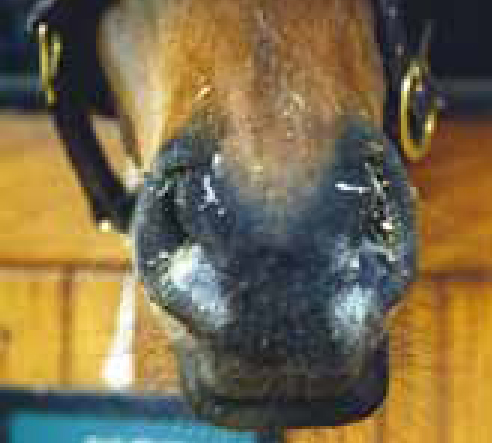
In the UK, a mandatory flu vaccination policy was introduced by the Jockey Club in 1981. The fact that since then no single day's racing has had to be abandoned is often quoted as evidence that this programme is effective. However, flu is still diagnosed in horses that have been vaccinated. That is not to say that flu vaccines should be abandoned: the majority of outbreaks in vaccinated groups of horses are of limited size and vaccination reduces the occurrence of epidemics.
Flu viruses frequently mutate so that they become unrecognisable to the immune system: this is called antigenic drift and means strains in flu vaccines go out of date. The World Organisation for Animal Health (OIE) is responsible for recommending suitable vaccine strains for inclusion in commercial vaccines and decision making is informed by ongoing surveillance data provided from numerous centres across the globe, including in the UK from the Equine Influenza Programme (http://www.equiflunet.org.uk/). This programme is funded by the Thoroughbred racing industry via the Horserace Betting Levy Board.
The British Equine Veterinary Association (BEVA) has recently formed an initiative to bring interested parties together and to lobby to ensure that our horses are protected in the most effective ways possible. The following actions were agreed as key priorities:
- Stakeholders to engage with The European Medicine Authority's Committee for Medicinal Products for Veterinary Use: Immunologicals Working Party to encourage revised guidelines that, where appropriate, facilitate and reduce the costs of approvals for vaccine strain updates
- Support for practitioner education on the clinical and virological features of EIV and the importance of pharmacovigilance and engaging with EIV surveillance
- Support for confidential reporting of suspected outbreaks
- Improving the speed of communication and cooperation between the Animal Health industry and the OEI Expert Surveillance Panel on EIV composition
- Review to determine whether the FEI and BHA rules can be refined to ensure vaccine use is in accordance with manufacturer's data sheet.
Virus strains can be classified in terms of their evolutionary relationships, and different branches of the phylogenetic family tree are called Clades. Viruses currently circulating are Florida Clade 1 and 2. There are no equine vaccines available in the UK that contain both Clade 1 and Clade 2 equine influenza isolates or antigens as recommended by OIE in 2010. However, there are vaccines that contain Clade 1 isolates and therefore can claim to have strains updated to comply with the OIE's 2004 recommendations. Challenge studies are used to demonstrate cross-protection with a variety of combinations of vaccine and virus strains.
It is important to acknowledge that vaccine strain is not the only factor that influences the effectiveness of any specific product and it is important to recognise that although some vaccinated horses develop signs when exposed to natural challenge with EIV, to date there have been no major flu outbreaks in vaccinated populations. There is evidence of cross-protection, meaning that a vaccine containing one strain can protect against other strains. Vaccination is aimed not only at limiting the spread of infection but also at protection of the vaccinated horse from developing severe clinical signs. Vaccine strain may not be so critical in the second goal.
Many racing authorities have no requirement for vaccination while others do not comply with current manufacturer's guidelines. In particular, most vaccine manufacturers suggest the first two doses should be given fairy close together, yet the BHA and FEI permit this interval to be extended. The manufacturers have significant hurdles to jump before they can include a new vaccine strain because the medicines regulators must also be satisfied before new products can be launched. Compliance with sport regulators' requirements is a powerful motivator to ensure vaccination takes place but many horse owners are happy to defer decisions on the most appropriate product to their veterinary practitioners.

